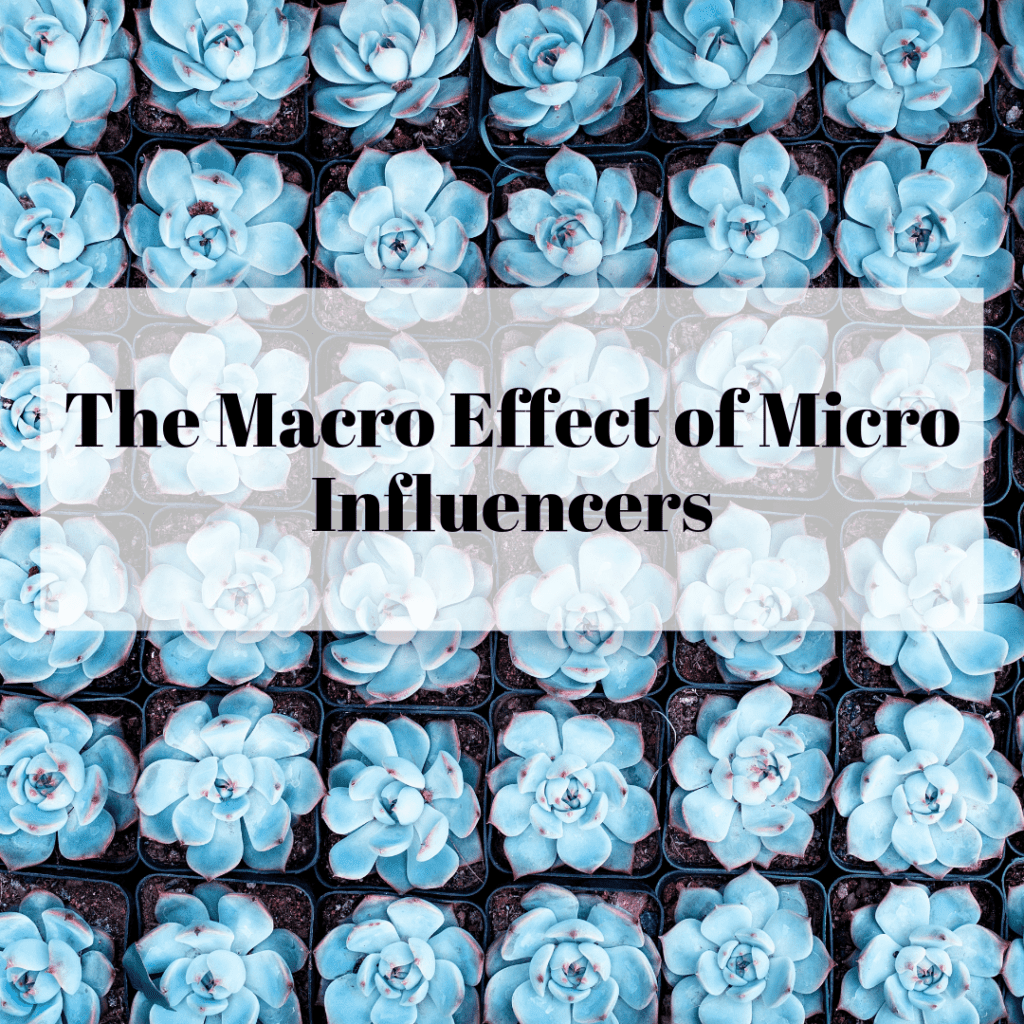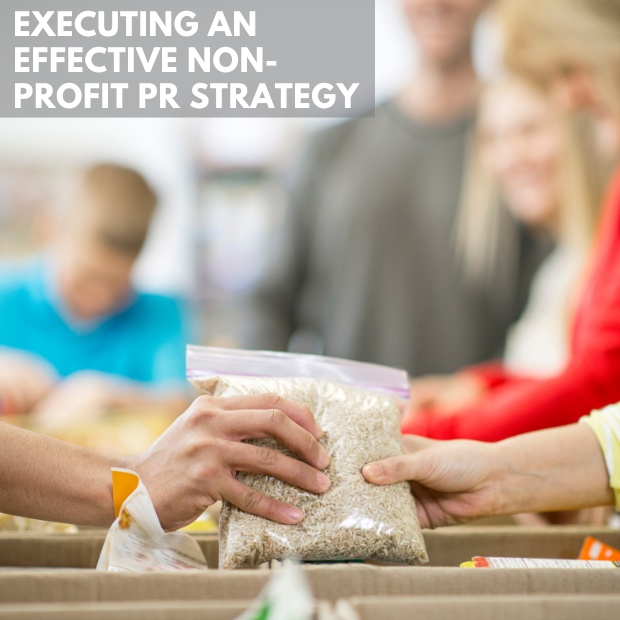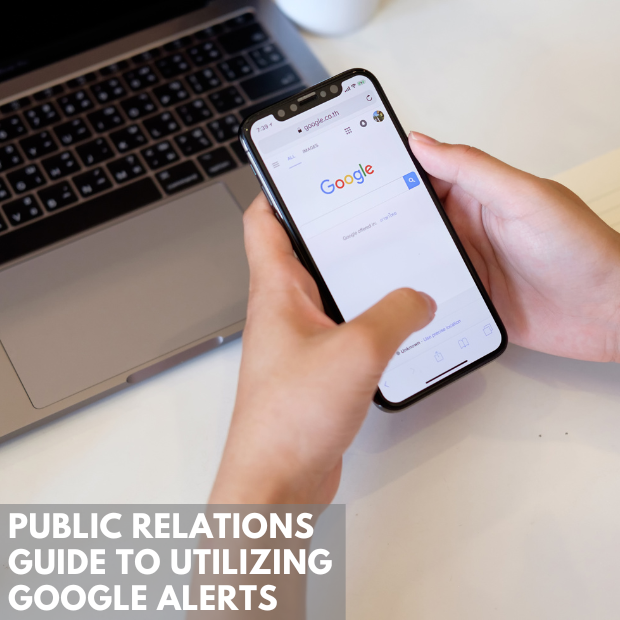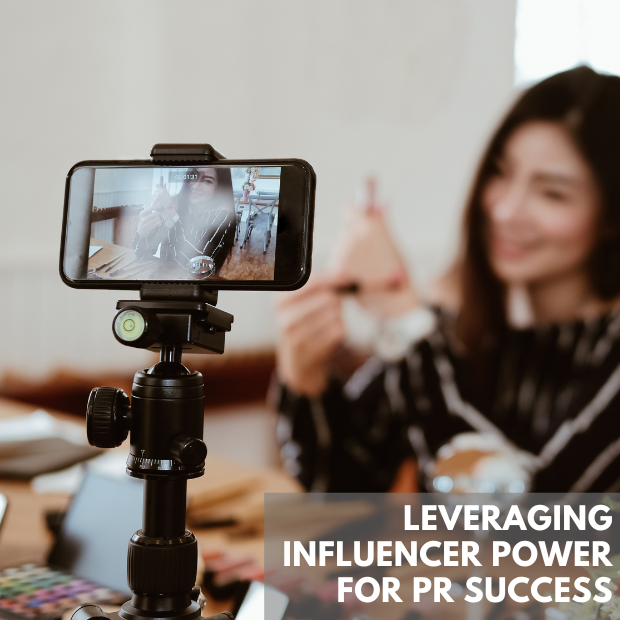
Micro Influencers’ Macro Effect
Micro influencers can have a big impact. Communicating with an audience can be tricky in the digital world’s endless ocean. We often overlook social media posts by companies and brands. Many of these posts do not attract the attention of its audience at the level they desire. Brands often choose to promote their products by cooperating with influencers thought to be fit for the brand to improve engagement.
Influencer marketing – which is well known as the digital version of word-of-mouth (WOM) – is deemed highly advantageous for brands because it increases visibility and recognition on social media platforms. Many brands turn to influencers for advertising because of these positives. Influencers can make an income off of these deals in the mutually beneficial partnership. Some influencers will post products simply for free items. Though one element holds true – most influencers only accept products they believe in. Followers know this. That factor helps to believe that when you advertise something, it is quality. Brand awareness and overall positive brand association are just two of the benefits of this kind of outreach.
Who are these influencers?
An influencer is a person who influences or changes people’s behavior by definition. They have an impact on others. They have gained their follower’s trust. Many people may consider them an authority on a given topic. These topics can range from health to fitness to fashion. An influencer creates a social media personality who has the power and popularity to influence their social media followers in today’s new world.
It is important to understand the differences between the two primary types of influencers when considering an influencer marketing campaign for your brand. These two types are mega-influencers and micro-influencers.
Who is a mega-influencer?
Mega-influencers have 50,000+ followers. This is not an easy achievment. It can take quite some time to reach this number. You can attribute their online presence to having fame from other arenas first. Mega-influencers are often paid to post brand-owned content, and they deliver this content to a large number of followers. It is an example of a full paid promotion in the influencer marketing world.
On the other hand, this new increase in power and influence also carries the opportunity for “targets” to anticipate and outweigh invasive marketing strategies. Unsurprisingly, a too strong or insidious pressure will produce dodging reactions, it makes it even easier thanks to existing tools that are using artificial intelligence, as well. Thus, hopes put into AI by marketers could be failing because of the inability of their messages to overcome the personal digital assistant barriers, which will vigorously protect their owners against assaults from brands and organizations.
Defining a micro-influencer
Micro-influencers are content creators who use social media actively. They post often. The posts are engaging. Each image captures the attention of their audience. Captions are curated to be captivating. These people share info about the products they love even if they do not earn money in return. Customers who have a modest number of followers to brand advocates are included in the micro-influencer category. These people typically have less than 50,000 followers. Micro influencers are quickly becoming a way to advertise.
Studies show that micro-influencers’ posts are often much more successful than posts of mega-influencers who have hundreds of thousands – or sometimes millions – of followers. Mega-influencers’ lifestyles and attitudes are often considered fake and serving only the advertisers’ needs, while micro-influencers are considered to be more sincere and trustworthy. It is important.
Ad credibility
Consumers are often generally aware that mega-influencers get paid for their promotional activity, and are less likely to believe in the mega-influencers’ endorsements for products. This financial incentive can ruin credibility. Younger generation’s distrust of advertising crosses to social media as well. Because they lack trustworthiness, billboards are going out of style. Television ads are known to be ignored. This makes sponsored products popular. Viewers like seeing that content. Since original content is better than ads, consumers love it.
Micro-influencers, on the contrary, share posts about their favorite products and they do so not because they get paid for it, but because they love the products and use them. Their lifestyle is wrapped around a specific topic. For example, a micro-influencer who focuses on health and tries numerous health products. Their goal may genuinely be to educate the public. They will be thrilled with a free product, and not care about financial gain. This saves businesses money, funds the influencer’s hobbies and educates the public.
Why brands should use micro-influencers more often
According to a report published in influencer.co, micro-influencers with 2,000-100,000 followers get paid between $130 and $260 per Instagram post. And for influencers with more than 100,000 followers, the price tag can reach up to $1,000 per single post. This can get costly when funding a campaign with numerous influencers. The engagement to follower ratio is important to consider.
Micro-influencers generally stand out as people who inform their followers in the most credible way. They are experts on a particular subject and they tend to have a content-focused follower base. The goal is to truly show people something they are passionate about. Many are known as “lifestyle” accounts for this reason. Accounts focus on the lifestyle of the influencer. Influencer’s don’t just believe in what they are selling, they are living the lifestyle it promotes. They are credible and trustworthy and they are followed as people who share their passions and interests honestly. Trust is a big deal when it comes to ads.
Micro-influencers have a certain degree of originality which is hard to get elsewhere. Unique content is key. You don’t want to have a cookie-cutter account. On a platform seperated by content creators and followers, you don’t want to follow someone else’s stlyle. Influencers have personal and sincere relationships with audiences. This leads to successful influencer marketing campaigns. It is valuable to companies. They seek out these accounts.
The poor get poorer, the rich get richer
Micro-influencers often have above-average interaction rates. In addition, participation rates of micro-influencers channels are usually higher than average because the audience has shown interest in the subject matter they cover. This works well with social media algorithms. The algorithm ensures people see your content. The more that interact, the more people see it. It is much easier for you to find influencer accounts than a normal person’s account. Less engagement means Instagram won’t prioritize you. More engagement shows Instagram that people care about your post. Thus, the poor get poorer.
Thus attention shifts from access and number of followers to participation rate, which is becoming an increasingly important criteria marketers consider when choosing the right influencers for their brands.
Final notes
Last but not least, micro-influencers are extremely cost-effective for small businesses and brands that want to implement marketing campaigns at a reasonable price point.
Until recently, consumer brands tend to opt for promotions and events involving mega-influencers. However, as the most recent research findings suggest, brands might want to rethink their spending patterns and seek other solutions to get closer to their audiences through the use of micro-influencers. Will brands remain indifferent to these most recent findings or will they apply them? We’ll have to wait and see.
The original article on the PRGN website is online here.
Raci Seymen is the senior copywriter at Aristo Communications in Istanbul, Turkey. You can read more on the work and expertise of Aristo Communications here: www.aristoiletisim.com








